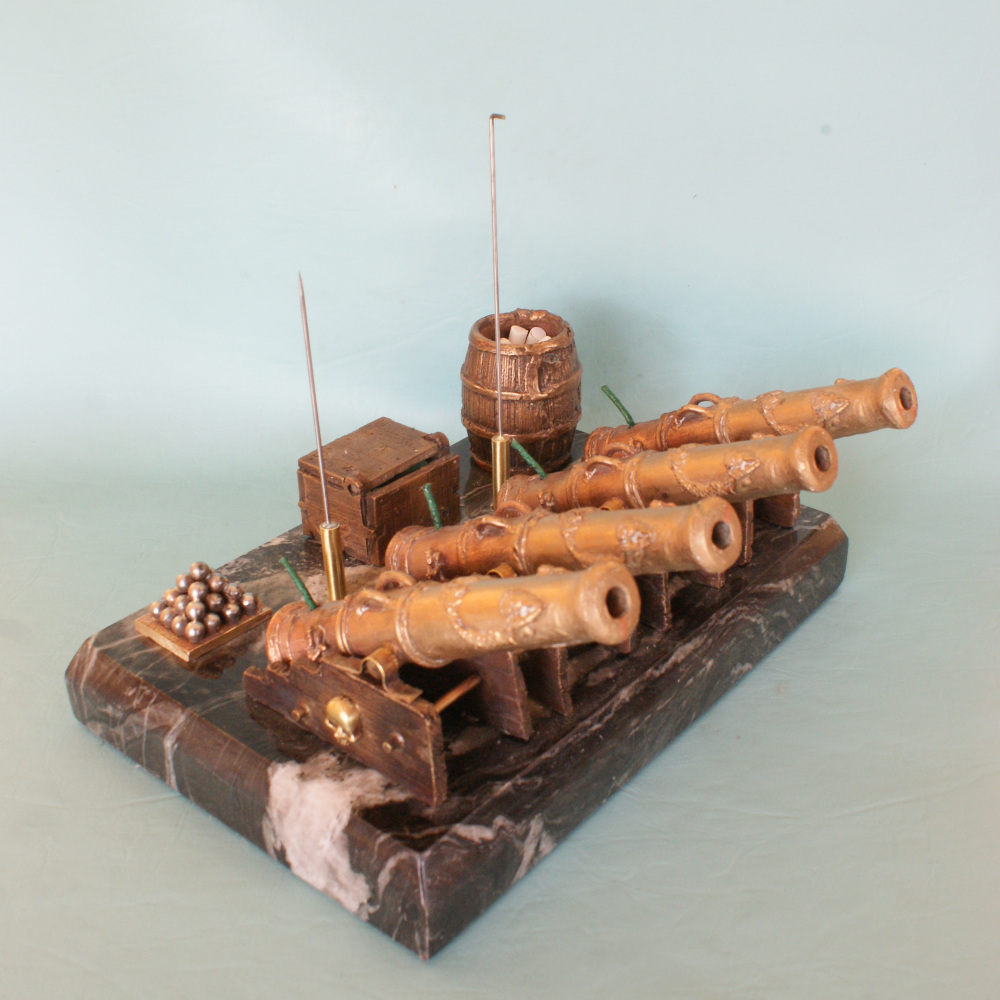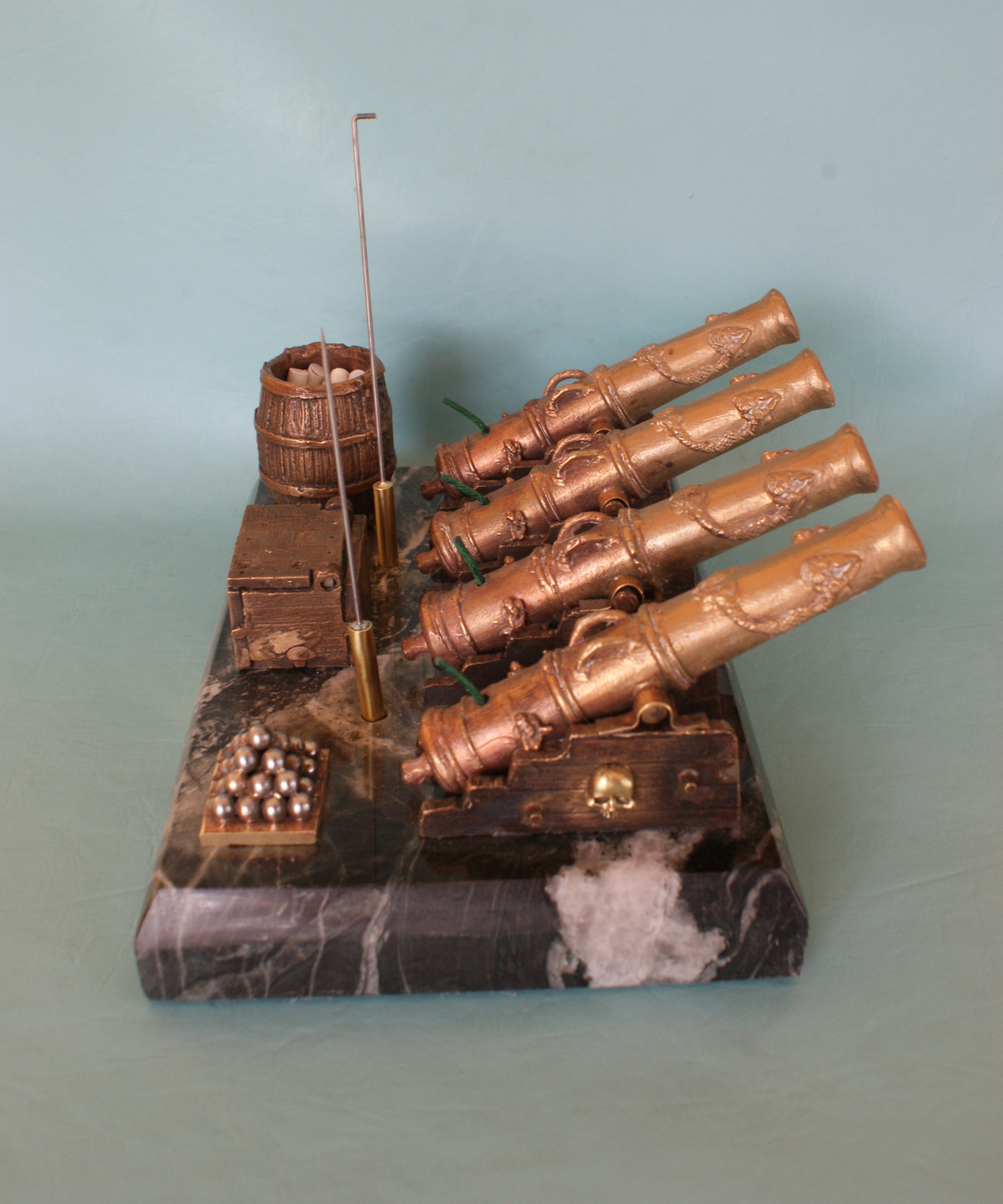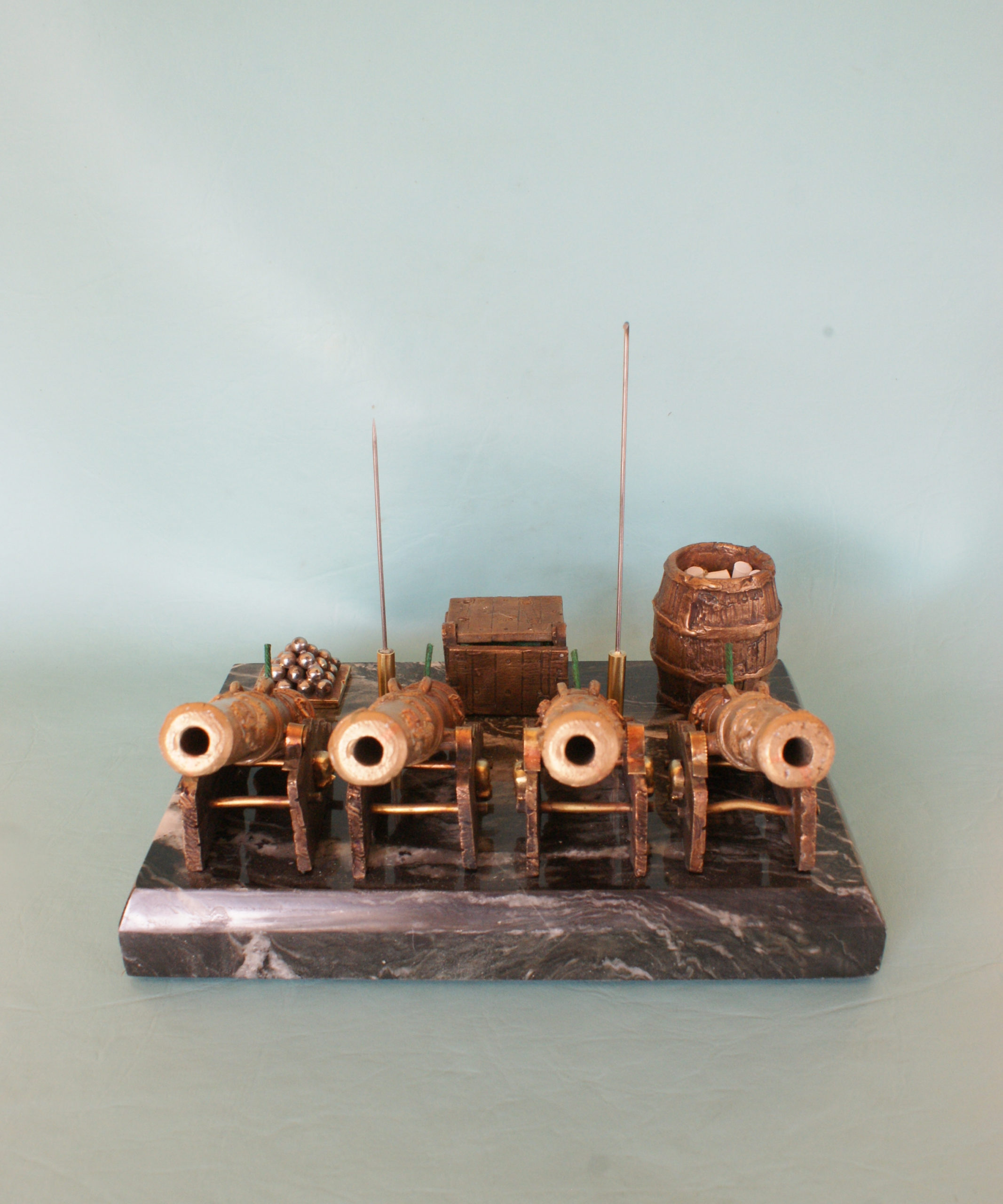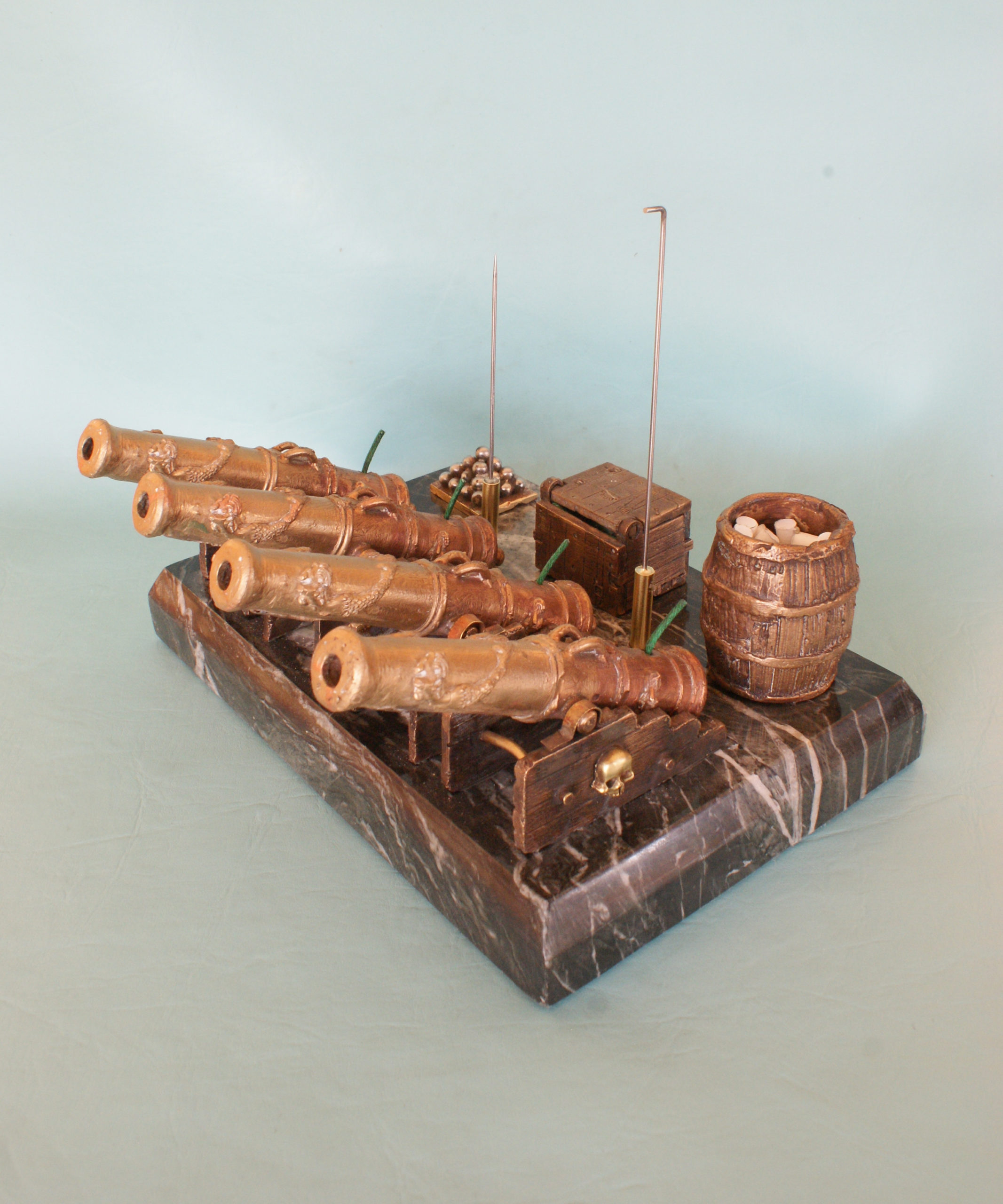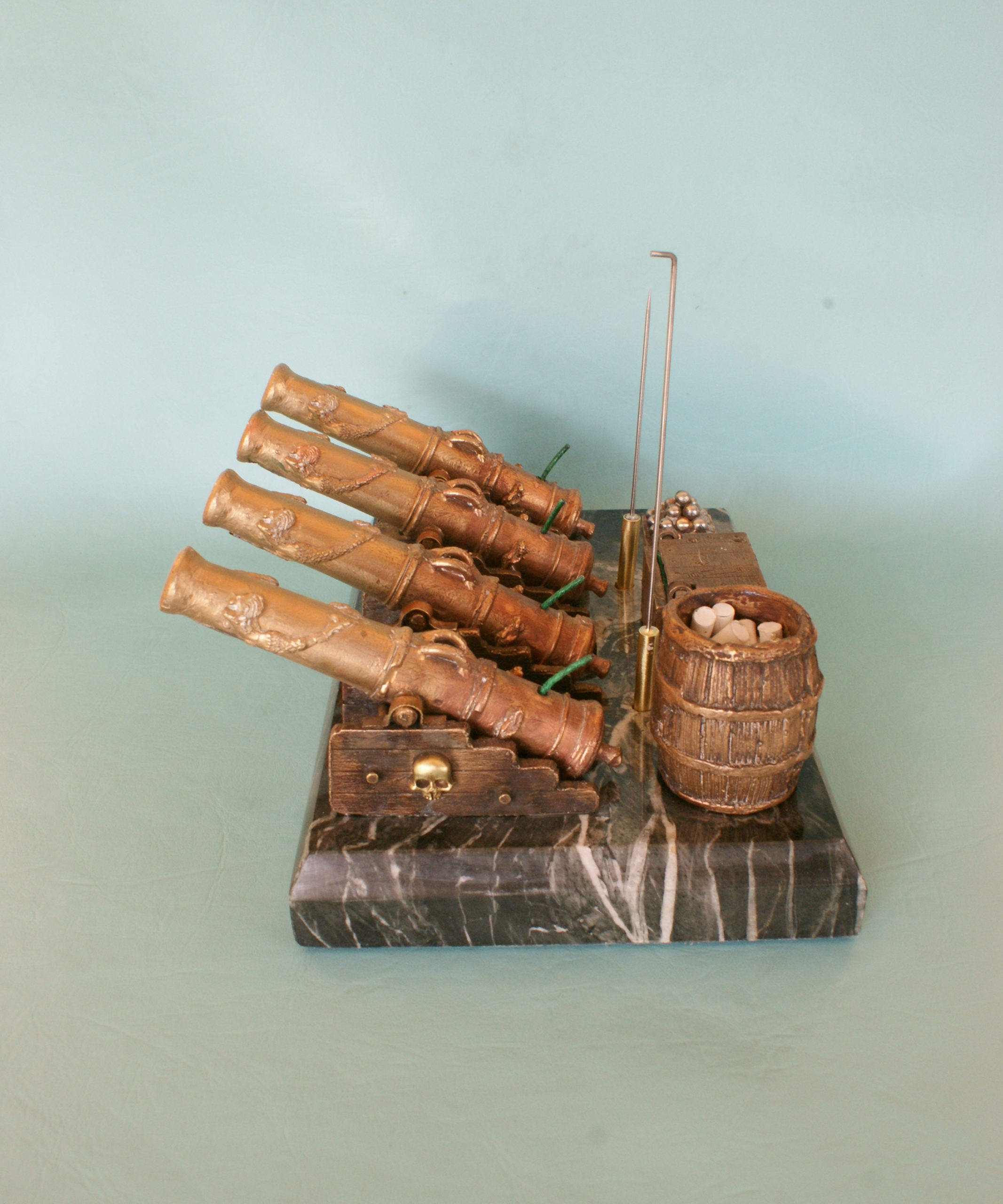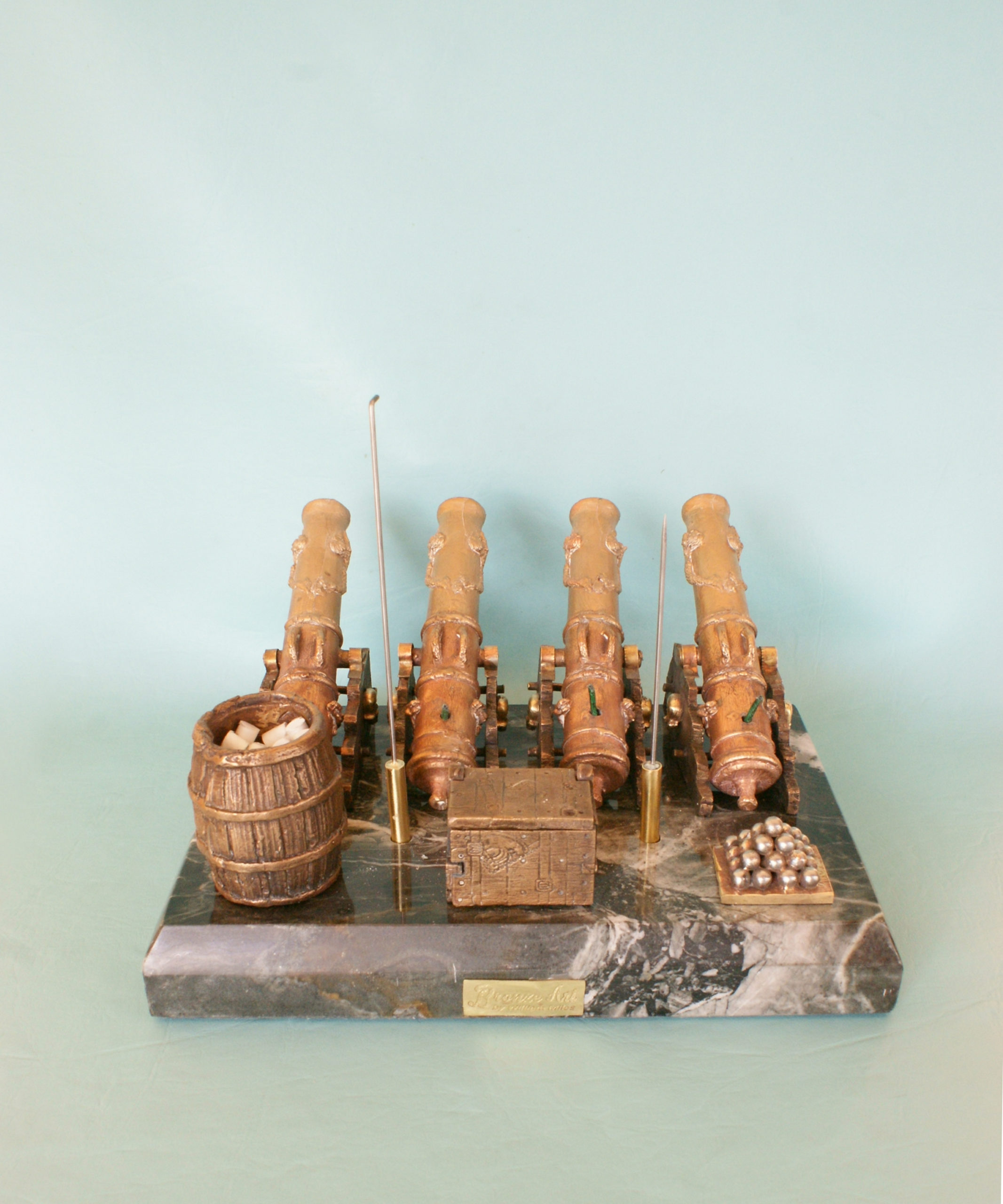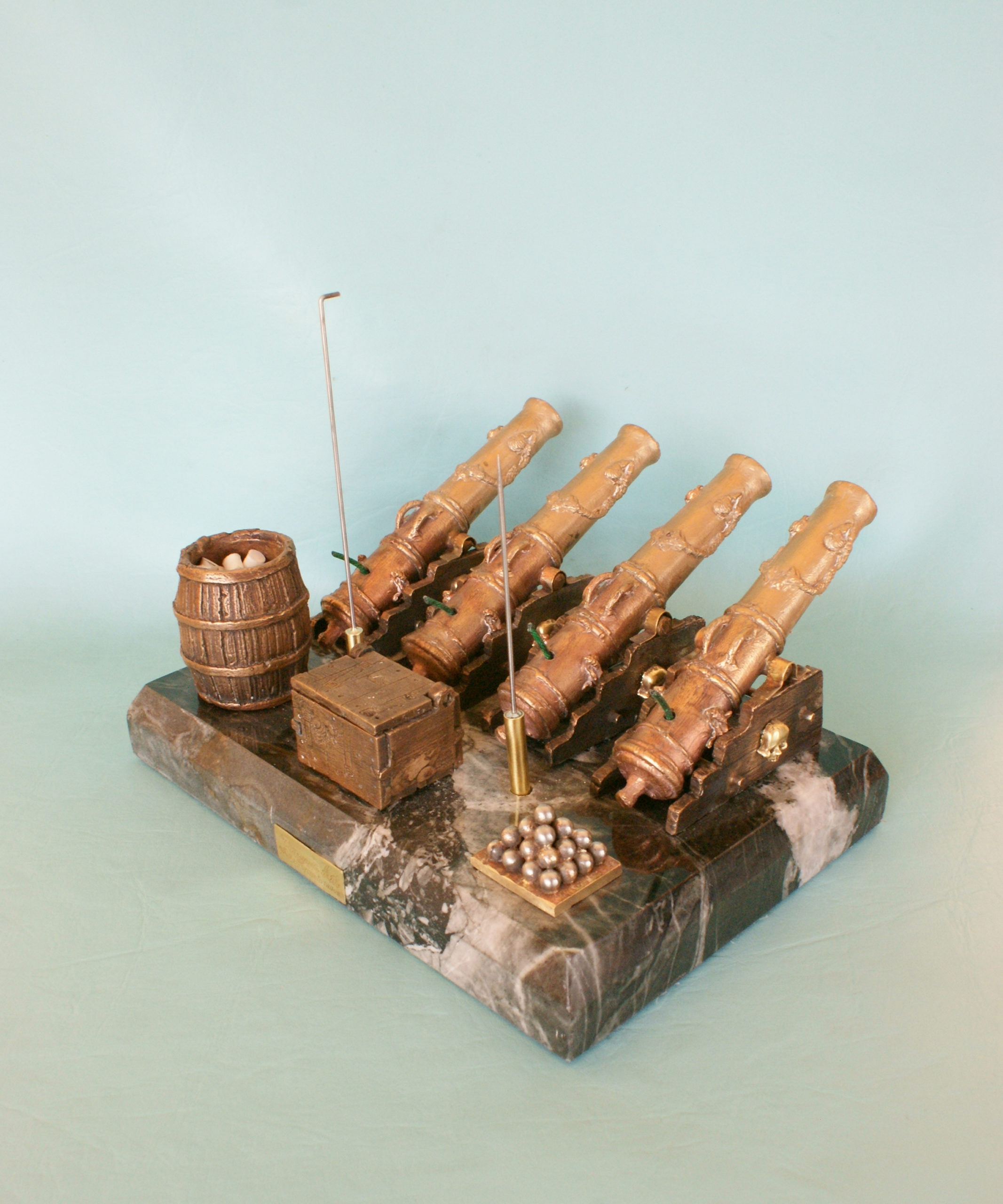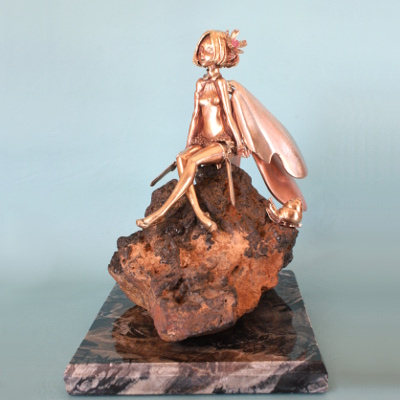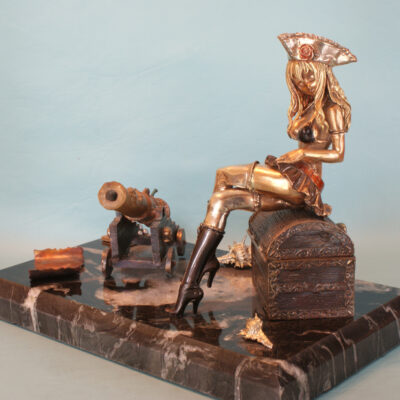Description
A collection of cannons is called a battery. A four charge battery is capable of only four charges before being recharged.
In 2016 I made an 18th century cannon. It’s a pseudo-replica of a 12-pdr bronze cannon cast by the Verbruggen family in England made in 1780. The actual cannon weighed 21 hundredweight (2352 pounds) and was 6’6” long.
My cannon with carriage weighs about 500 grams and is about 5.5 inches long. My cannon is designed to fire 1/4 inch steel balls that weigh about 1 gram. Or it may fire them. I haven’t actually tested the cannon yet.
I’m not kingly enough to put King George’s crest and coat of arms on my cannon. So instead, I attached mermaids to the cannon. They add some perspective as embellishment was typically added to old bronze cannons.
I originally thought to point my cannons at a cell phone, because I hate cell phones, but then I thought that four charges might not be enough. So I abandoned this idea.
Instead, imagine four cannons firing almost all at once.
This sculpture contains a replica of a number of consistently measured charges that are of the proper size to be slid down the cannon barrel. The back end of either supplied tool can be used as a ramrod to push the powder charge into the barrel. When properly positioned beneath the touch hole the supplied steel pin tool is used to puncture the powder charge to expose the powder. A fuse is inserted into the touch hole.
A ball bearing can be rolled down the bore. It can be secured with a small piece of tissue paper.
To fire the cannon the fuse is lit. Stand back and be safe.
Once fired, the other tool can be used to clean the cannon and remove any residue from the bore.
I did experiment once with a fuse and a charge in an aluminum pan. It sort of fizzled. I don’t know if my cannon will actually work. But it is fun to imagine a 4 charge battery.
16 cm deep
23 cm wide
17 cm high
Weighs 5.3 kg

